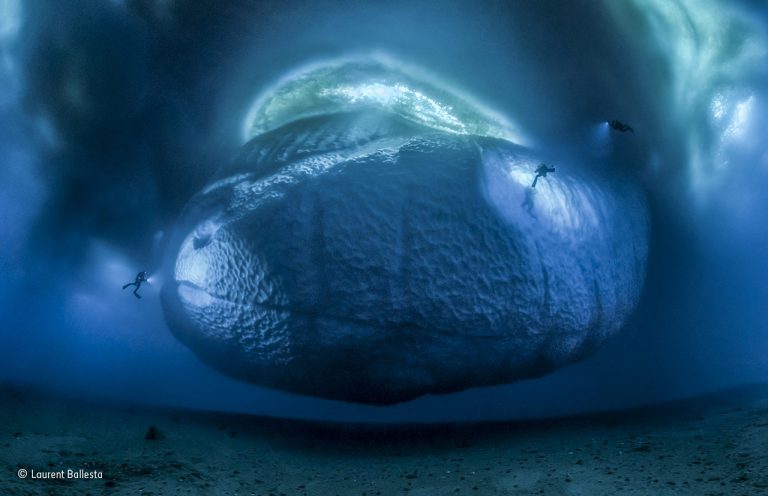The dive-team were working out of the French Dumont d’Urville scientific base in east Antarctica, filming and photographing the impact of global warming.
Also read: Rise & fall of the Loch Ness Monster eel
Ice shelves in some parts of the ice sheet there are melting faster than scientists had expected, threatening movement of land ice into the sea and elevated sea levels.
When Ballesta spotted this relatively small iceberg, he says he saw the chance to realise a long-held ambition to show the entire underwater part for the first time. It was stuck in the ice-field “hovering like a frozen planet” and, being unable to flip over, was safe to explore.
It took three days, in virtually freezing water, to check out the location, install a grid of distance lines from the seabed to buoys and then take a series of pictures with a wide-angle lens big enough to capture the entire scene.
“None of us could see the whole thing under water,” said Ballesta. “Close to, it was overflowing from our view. From a distance, it disappeared into the fog.”
Later, the result of 147 stitched images came together on the computer screen.
“The front of the vast foot of the frozen monster, polished by the current probably over years, shone turquoise and blue in the light penetrating the ice ceiling, dwarfing the other divers as they lit its sides.”
Other winning shots in this year’s competition include Australian Diver Magazine contributor Justin Gilligan’s giant spider crab and Maori octopus “Crab Surprise” (Behaviour: Invertebrates); “The jellyfish Jockey”, a blackwater image by Anthony Berberian of France (Underwater); sperm whales in US diver Tony Wu’s “Giant Gathering” (Behaviour: Mammals); and US photographer Brian Skerry’s leatherback turtle “The Ancient Ritual” (Behaviour: Amphibians and Reptiles).
London's Natural History Museum organises the prestigious annual competition, which this year attracted almost 50,000 entries from professionals and amateurs across 92 countries. Overall winners are selected on the basis of creativity, originality and technical excellence, and their images and all the other shortlisted photographs are now on display at the museum until late May 2018, and will also embark on a UK and international tour.
The 2018 competition is open for entries from Monday 23 October to 14 December this year – to book tickets for the exhibition or to enter the next contest, go here

